Europe is the second-smallest continent in the world, but it is home to 745 million people. It may only be 2% of the world’s area, but there are fifty countries on the continent. There are so many cultures, religions, customs, and nationalities. Each of them is unique. When it comes to climate, Europe is very broad — ranging from very cold to very hot. Temperatures change drastically, depending on where in the European continent you are.
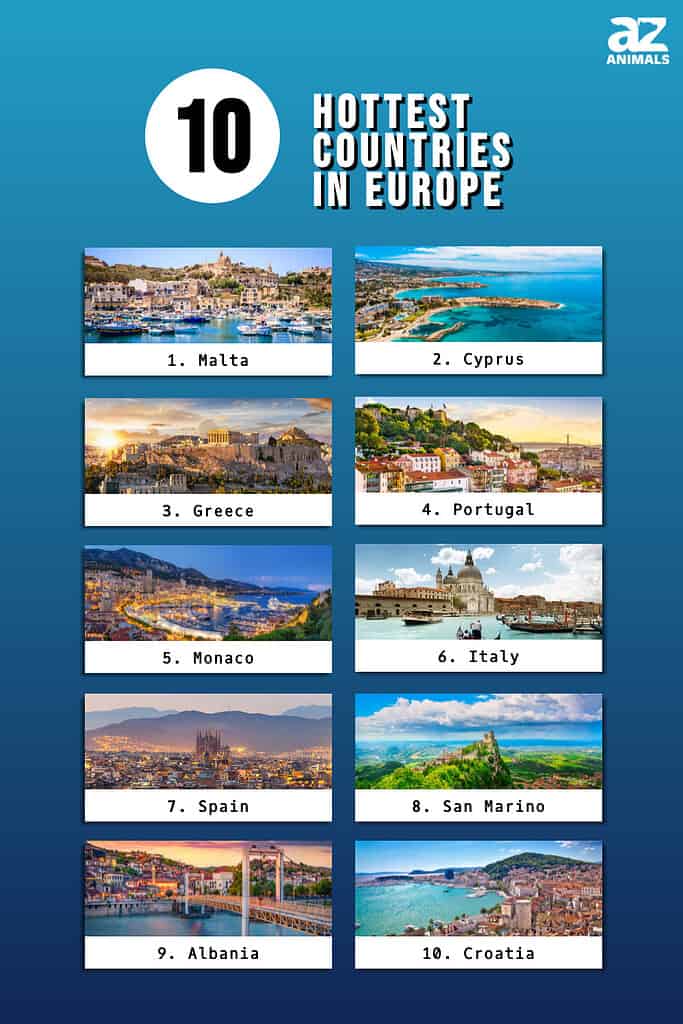
Geographically speaking, the hottest countries are in Southern Europe. Except for two countries — Portugal and San Marino — every single one borders the Mediterranean Sea. Let’s explore Europe’s hottest countries in terms of yearly average temperature.
1. Malta
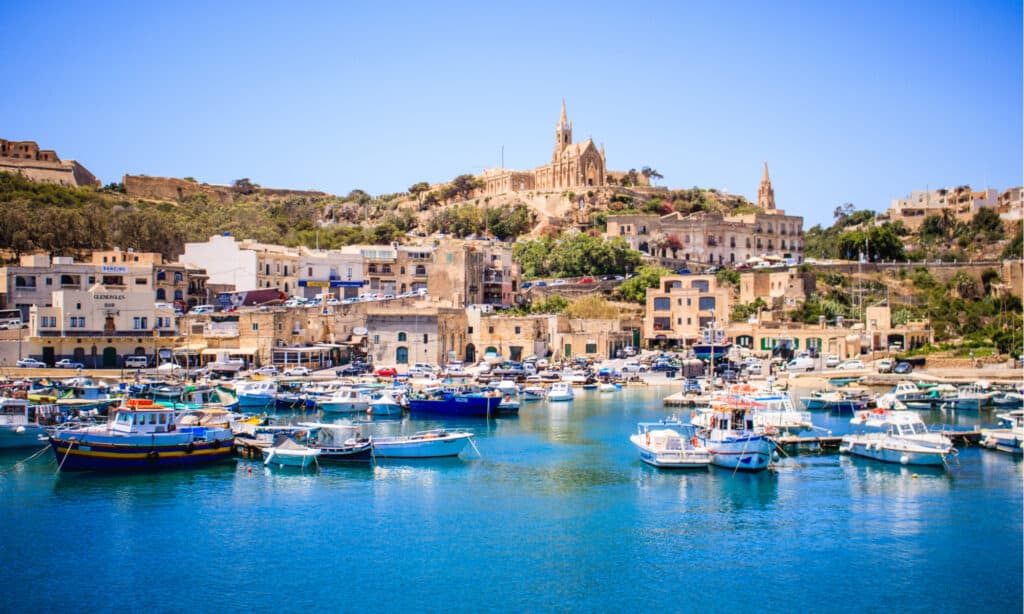
Malta is a tiny island nation, whose name is derived from the Greek word that means “honey.”
©Dragan Adoroarte/Shutterstock.com
Average Yearly Temperature: 66.5 degrees Fahrenheit (19.2 degrees Celsius)
Malta is a tiny island in the middle of the Mediterranean. With its pristine waters, you can enjoy some beach time almost any time during the year. There are about 300 days of sunshine in this island nation. Because of its Mediterranean climate, Malta is home to a very diverse environment with many species of plants and trees, like the olive tree.
2. Cyprus
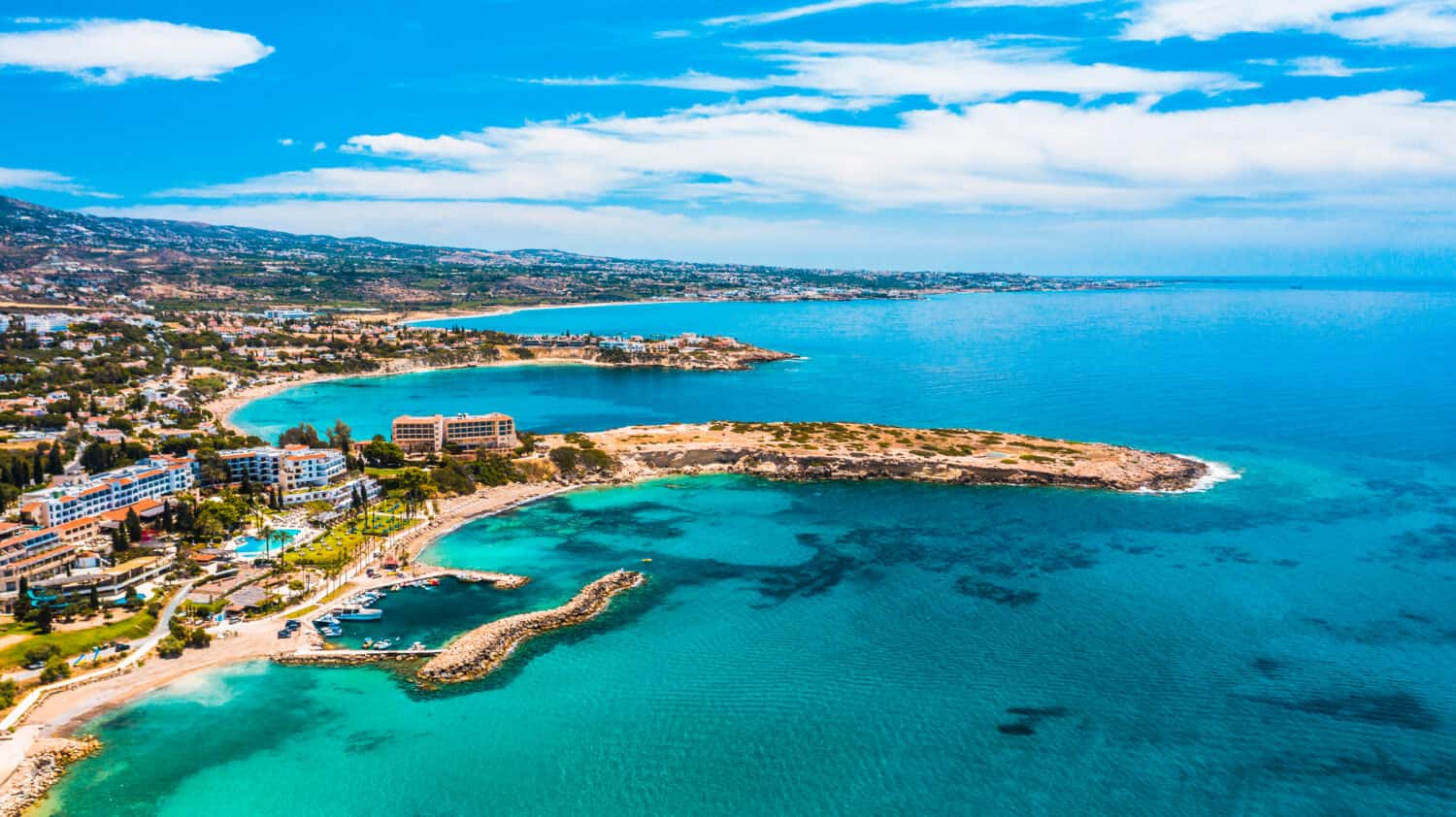
This island nation is home to not only the world’s oldest perfume but also the oldest wine.
©Sabina Berezina/Shutterstock.com
Average Yearly Temperature: 65.1 degrees Fahrenheit (18.4 degrees Celsius)
Another island nation is in the top three hottest countries in Europe. Cyprus is the third largest island in the Mediterranean with only Sicily and Sardinia being larger. With a subtropical and Mediterranean climate, it’s sunny mostly all year long. Rain usually occurs in the winter. But this weather is perfect for tourists who want to enjoy the sun at any time of the year.
3. Greece

Greece is one of the most mountainous countries in Europe and it boasts the longest coastline in Southern Europe.
©Sven Hansche/Shutterstock.com
Average Yearly Temperature: 59.7 degrees Fahrenheit (15.4 degrees Celsius)
Greece is one of the oldest countries in the world. It has thousands of islands and many of them have become famous for being ideal tourist destinations. If you are looking for a perfect summer holiday, look no further than some of the popular islands in Greece, like Mykonos and Santorini. The summers are mostly dry and it rains only sporadically and mainly in the north. There is even snowfall, but it only occurs in the mountainous regions of the country.
4. Portugal

Although many people would think Greece, Portugal is actually the oldest country in Europe.
©iStock.com/SeanPavonePhoto
Average Yearly Temperature: 59.1 degrees Fahrenheit (15.1 degrees Celsius)
Portugal does not touch the Mediterranean Sea. It is nuzzled in the middle between Spain and the Atlantic Ocean. Because of its location, Portugal used to be one of the most powerful maritime nations in the world. When it comes to its weather, Portugal is one of the hottest nations in Europe. It boasts a tremendous 300 days of sunshine per year. Any time of the year is a great time to visit, lay on the beach, and enjoy some of the tourist attractions Portugal has to offer.
5. Monaco
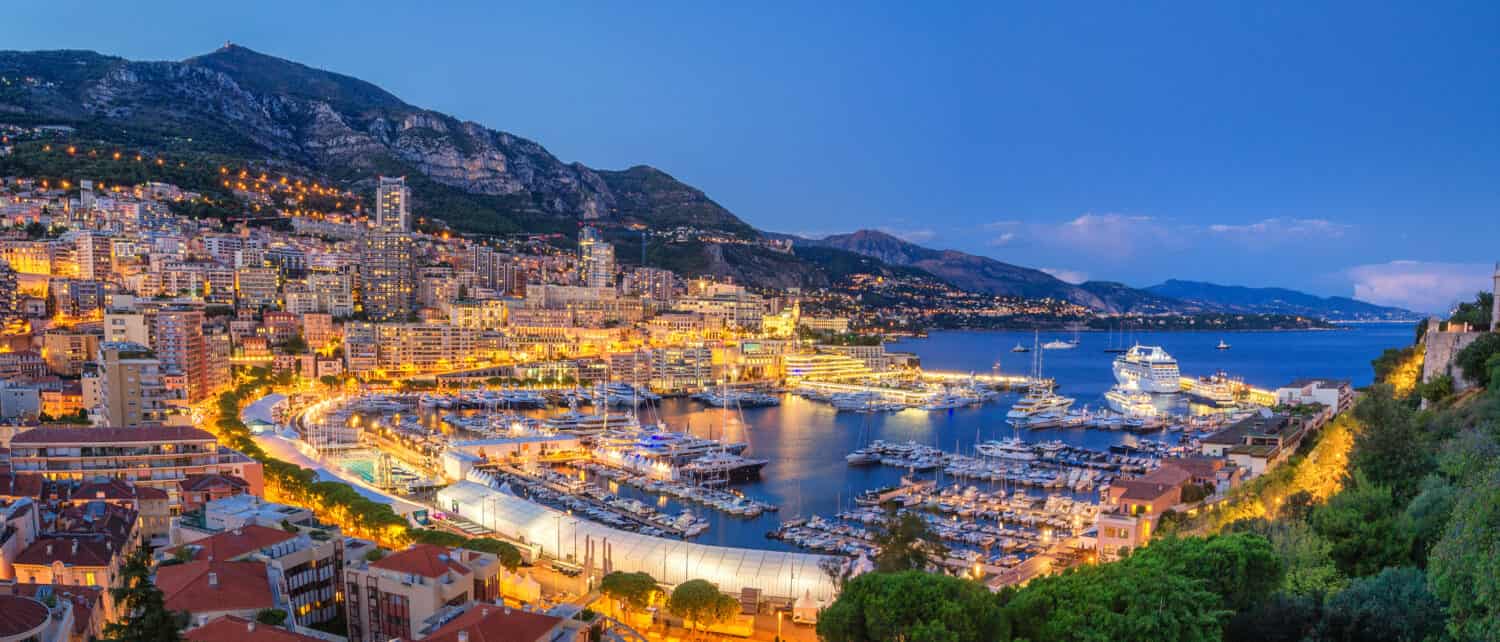
Even though it is the second-smallest country in the world, about 30% of people living in Monaco are millionaires.
©tichr/Shutterstock.com
Average Yearly Temperature: 56.3 degrees Fahrenheit (13.5 degrees Celsius)
Monaco is one of the most tiny nations in the world. With a population of only 36,000, it is home to many of the wealthiest people in Europe. It has near-perfect weather all year round, making it popular for tourists to enjoy a day at the beach. If you want to take a break from laying out in the sun, you can head to a café and people watch or go inside one of its several ritzy casinos.
6. Italy

Italy is the fifth most visited country in the world with 65 million tourists per year.
©ESB Professional/Shutterstock.com
Average Yearly Temperature: 56.1 degrees Fahrenheit (13.4 degrees Celsius)
Italy has so much to offer and there are so many fun activities to do. You can enjoy the country, the cities, and the beaches. When it comes to weather, Italy is humid and hot because of the Mediterranean Sea. During the summer, the heat can get dangerous. The Italian heat wave in 2023 proved to be fatal.
When it comes to biodiversity, Italy is home to more than 57,000 species of plants. The animal population in the country is also vast, meaning you can look out for the Sardinian red deer on your morning hike.
7. Spain

Spain was one of the world’s most influential powers and as a result, Spanish is the second most spoken native language in the world.
©basiczto/Shutterstock.com
Average Yearly Temperature: 55.9 degrees Fahrenheit (13.3 degrees Celsius)
Located in the Iberian Peninsula, Spain is one of the largest countries in Europe. Its climatic regions are vast, which means there are a lot of fun, outdoor activities people can enjoy. There is something for everybody! You can head to the beach and enjoy sea activities like surfing, kayaking, or snorkeling. And you can head to the mountains to do some animal watching and hiking.
Getting 325 days of sun a year, Spain doesn’t get much rain, something that has worried scientists and the government because of the droughts it has experienced in recent years. Luckily, in the more mountainous regions of the north, the rainfall and snow are more prominent.
8. San Marino

Completely landlocked by Italy, it is no surprise that San Marino’s official language is Italian.
©StevanZZ/Shutterstock.com
Average Yearly Temperature: 53.2 degrees Fahrenheit (11.8 degrees Celsius)
Another tiny nation is on this list of hottest countries. The fifth smallest country in the world, San Marino is home to only 33,000 people and has an area of only 23.63 square miles. It is completely engulfed by Italy on all sides. Because Italy is quite hot, especially during summer, the same could be said about San Marino. Without any beaches to attract tourists who love the sea, San Marino relies on its mountains and hills to attract those nature and hiking lovers.
9. Albania
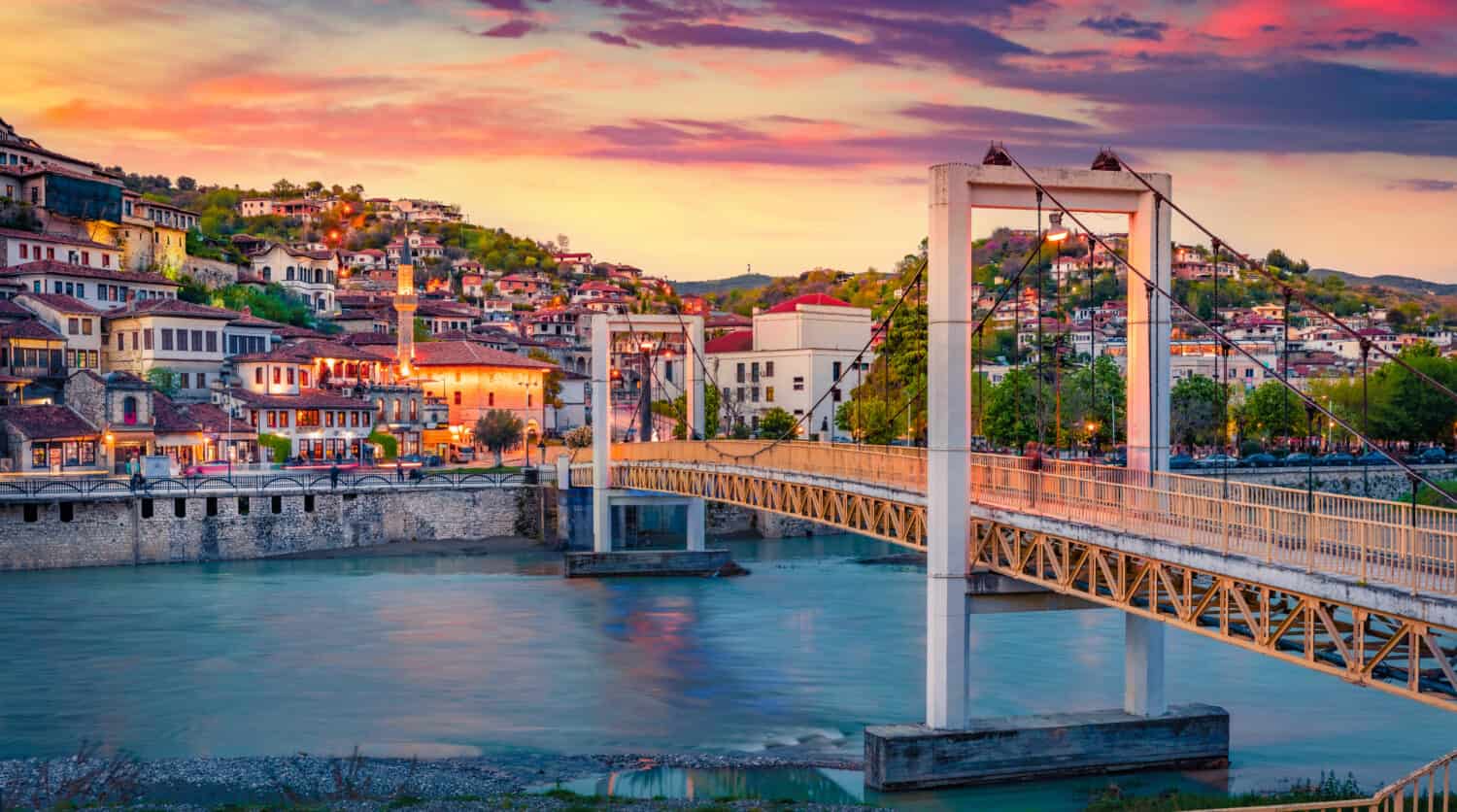
A majority of Albanians are Muslim because the country was under Ottoman rule for hundreds of years.
©Andrew Mayovskyy/Shutterstock.com
Average Yearly Temperature: 52.5 degrees Fahrenheit (11.4 degrees Celsius)
The country of Albania is located north of Greece and is part of the Balkans region of Europe. Albania has a diverse type of climate because of where it is situated on the continent. The coasts have a Mediterranean climate, which is perfect for beachgoers and those that like sunny Weather. As you go inland, you’ll find yourself in a colder and very humid, mountainous region.
10. Croatia
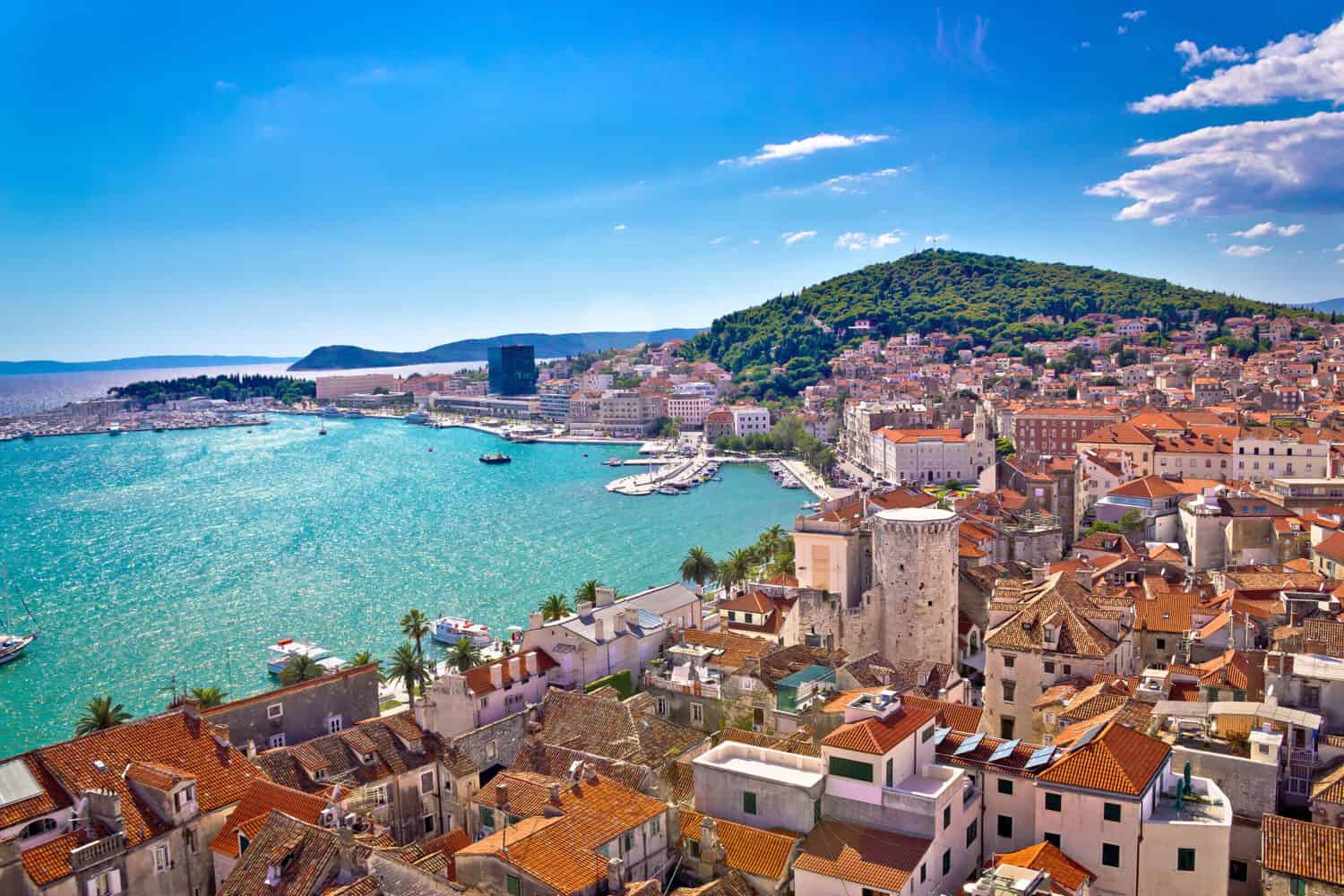
The television series,
Game of Thrones, was filmed in Croatia.
©xbrchx/Shutterstock.com
Average Yearly Temperature: 51.6 degrees Fahrenheit (10.9 degrees Celsius)
Also part of the Balkans region of Europe, Croatia has become popular in recent years with tourists wanting a different type of summer holiday than the overpopulated regions in Spain, France, and Italy. Croatia has different climates with the Mediterranean Sea on the west and a continental climate on the east. Croatia has thousands of islands, many lakes, and natural parks, perfect for those wanting to experience a diverse ecosystem. The Danube River, Europe’s second-longest river, also runs through the country.
Conclusion
As climate change continues to wreak havoc on the world, the average temperatures will increase. The EU’s Copernicus Climate Change Service has recorded data for countries in the European continent since 1950. What the scientists found was that Europe had the second warmest year in 2022.
Europe’s 10 hottest countries will continue to get hotter. Summers are starting to get quite concerning with heat waves happening more often, most recently in Spain and Italy in 2023. But if you love the heat and the sun shining most of the year, then head to these southern European countries.
Summary of the 10 Hottest Countries in Europe
| Country | Average Temperature (Fahrenheit) | Average Temperature (Celsius) | |
|---|---|---|---|
| 1 | Malta | 66.5 degrees | 19.2 degrees |
| 2 | Cyprus | 65.1 degrees | 18.4 degrees |
| 3 | Greece | 59.7 degrees | 15.4 degrees |
| 4 | Portugal | 59.1 degrees | 15.1 degrees |
| 5 | Monaco | 56.3 degrees | 13.5 degrees |
| 6 | Italy | 56.1 degrees | 13.4 degrees |
| 7 | Spain | 55.9 degrees | 13.3 degrees |
| 8 | San Marino | 53.2 degrees | 11.8 degrees |
| 9 | Albania | 52.5 degrees | 11.4 degrees |
| 10 | Croatia | 51.6 degrees | 10.9 degrees |
Thank you for reading! Have some feedback for us? Contact the AZ Animals editorial team.








